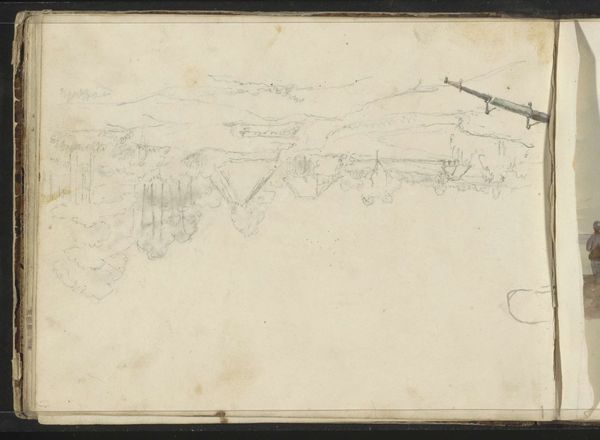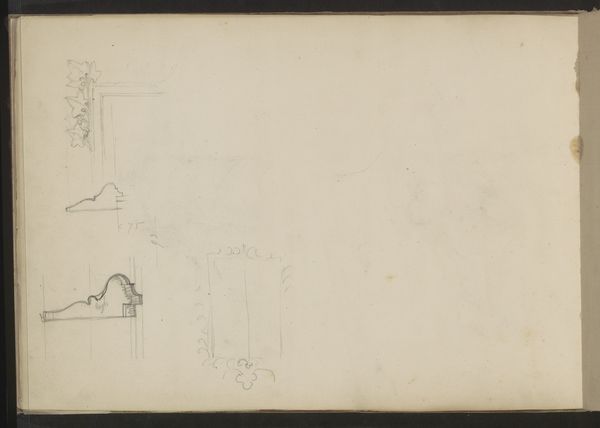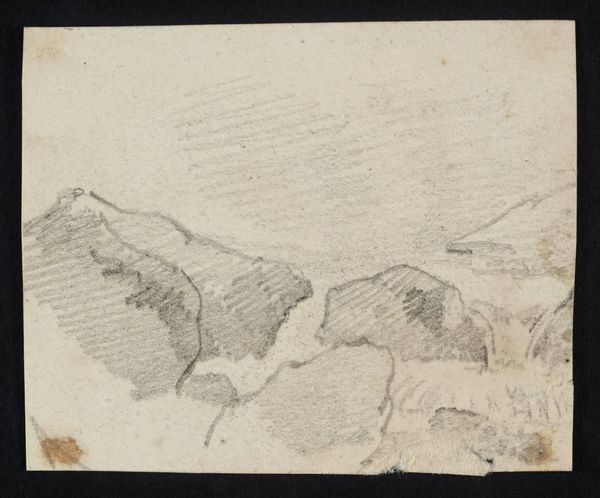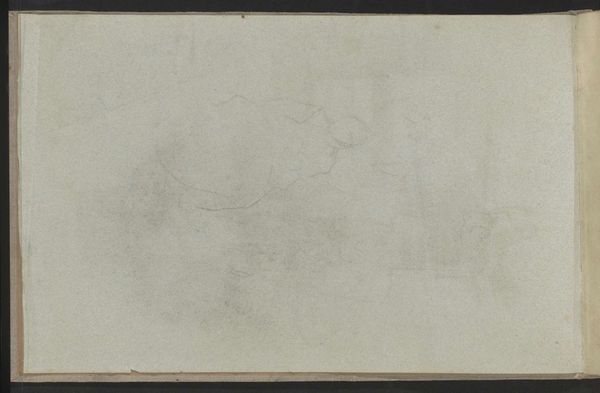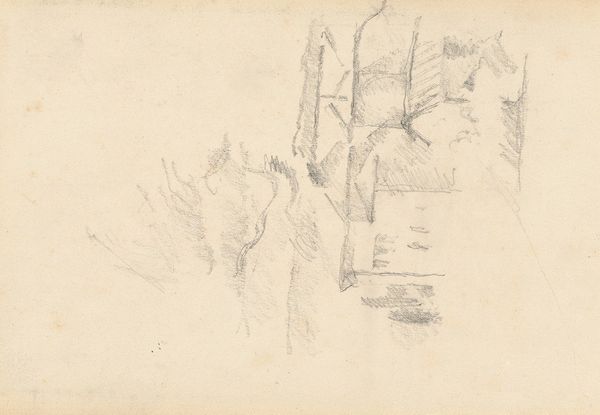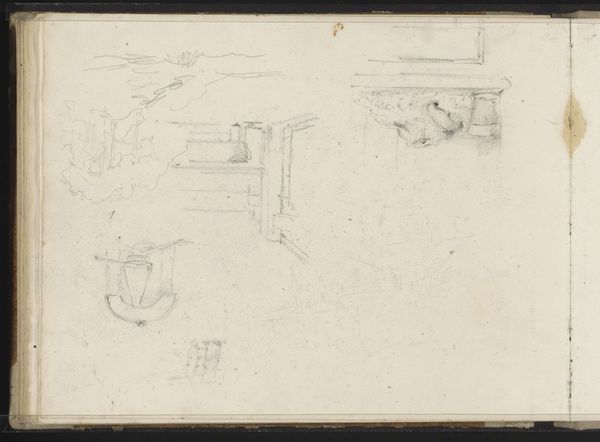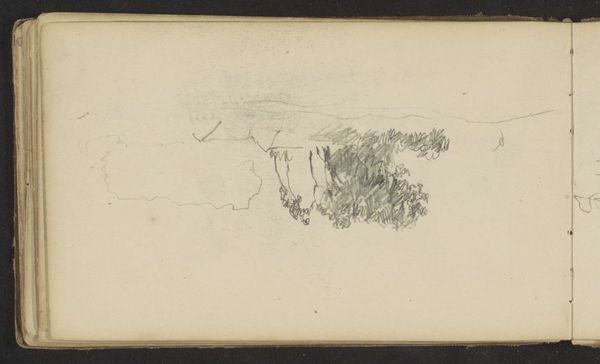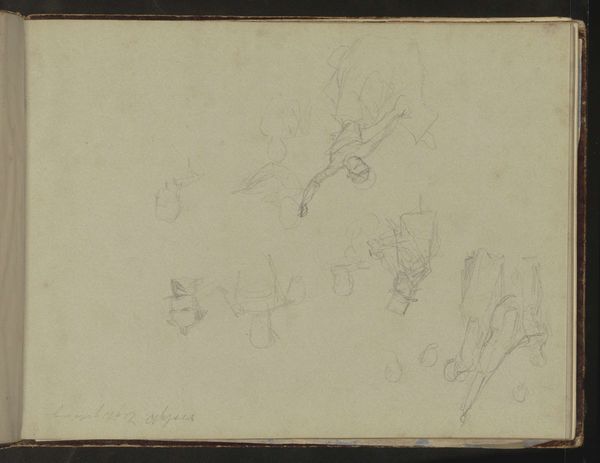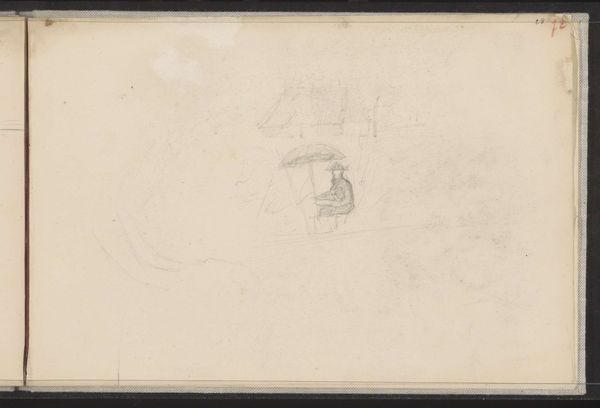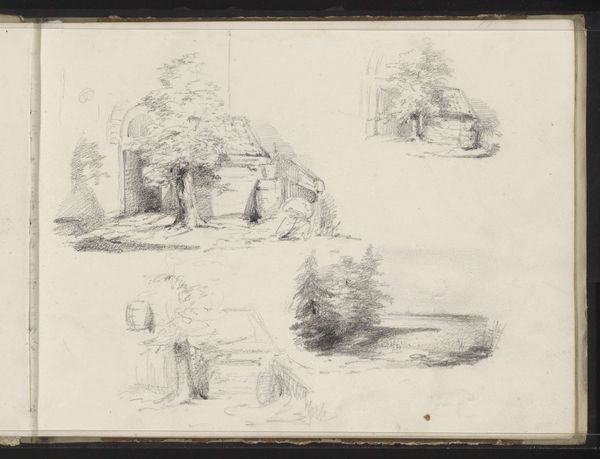
drawing, paper, graphite
#
portrait
#
drawing
#
animal
#
landscape
#
paper
#
horse
#
graphite
#
realism
Copyright: Rijks Museum: Open Domain
Editor: Here we have “Horse and Cow by a Tree,” a graphite drawing on paper by Willem Troost, dating sometime between 1822 and 1893. It’s got a quiet, pastoral feel. What do you see in this piece, Professor? Curator: The composition immediately strikes me. Note the subtle yet effective use of line to delineate form. Troost masterfully captures the texture of the animals' hides and the rough bark of the tree. Consider the delicate balance of positive and negative space—how the light areas allow the graphite to truly sing. The artist plays with shadow and mass and conveys weight in his animal forms, which enhances their monumentality in such a pared-down environment. Editor: I’m curious about that sense of mass within such a delicate sketch. It does feel heavier than it is. Curator: Precisely. Observe how the density of the graphite varies across the composition, creating a dynamic interplay of light and shadow. This not only enhances the three-dimensionality of the subjects but also directs the viewer’s eye. Consider the structural integrity – each stroke, each mark contributes to the overall cohesion of the image. Is it simply representational? Or are we meant to perceive this landscape as more – more constructed or representative of something deeper than the lines represent? Editor: I never would have noticed those variations without you pointing them out! I was focused on what was *there*, not how the artist got it there. I learned a lot from your comments on composition. Curator: Indeed, it is often the formal elements that unlock deeper readings of a work of art, in terms of our understanding and of the work itself.
Comments
No comments
Be the first to comment and join the conversation on the ultimate creative platform.
